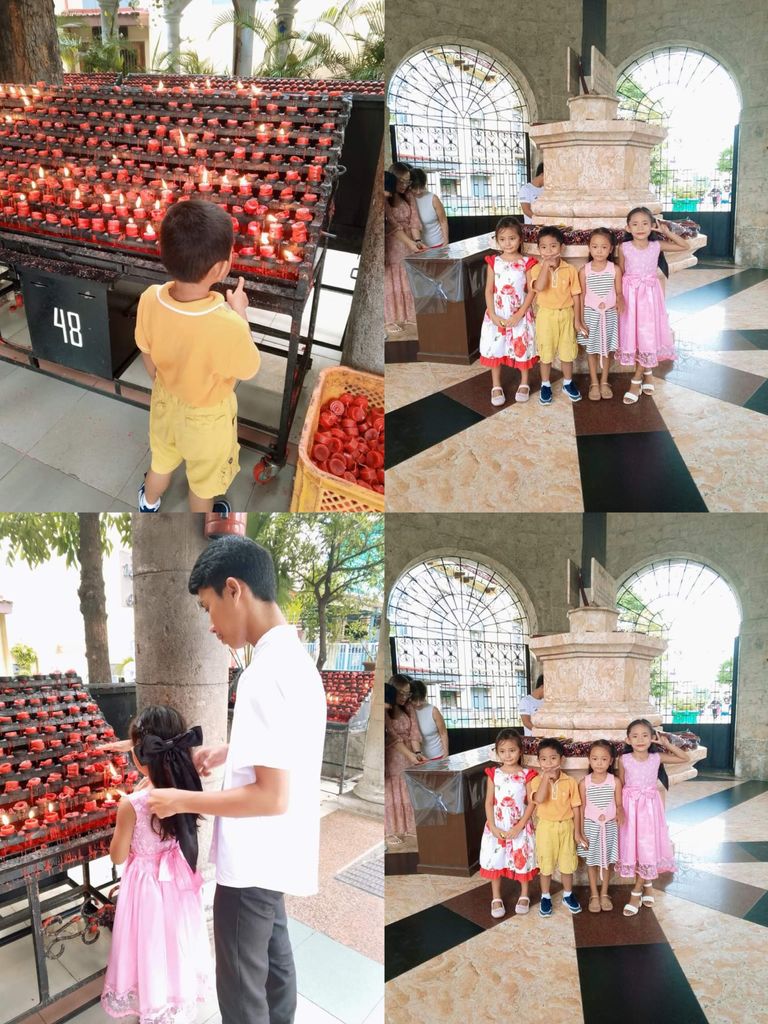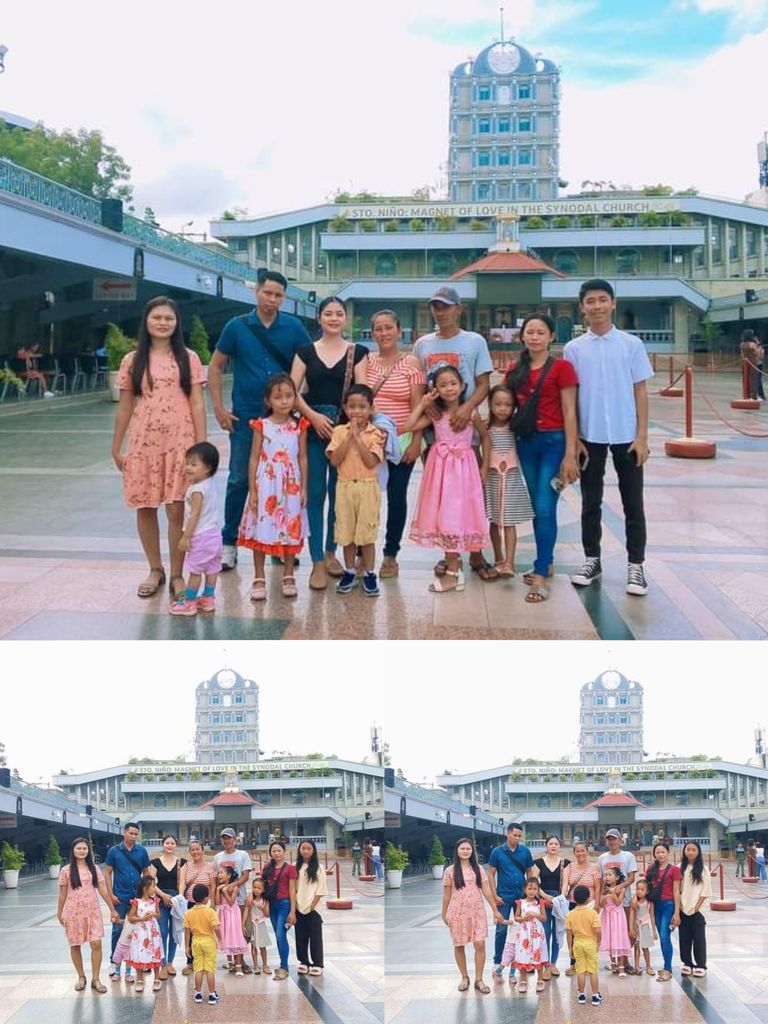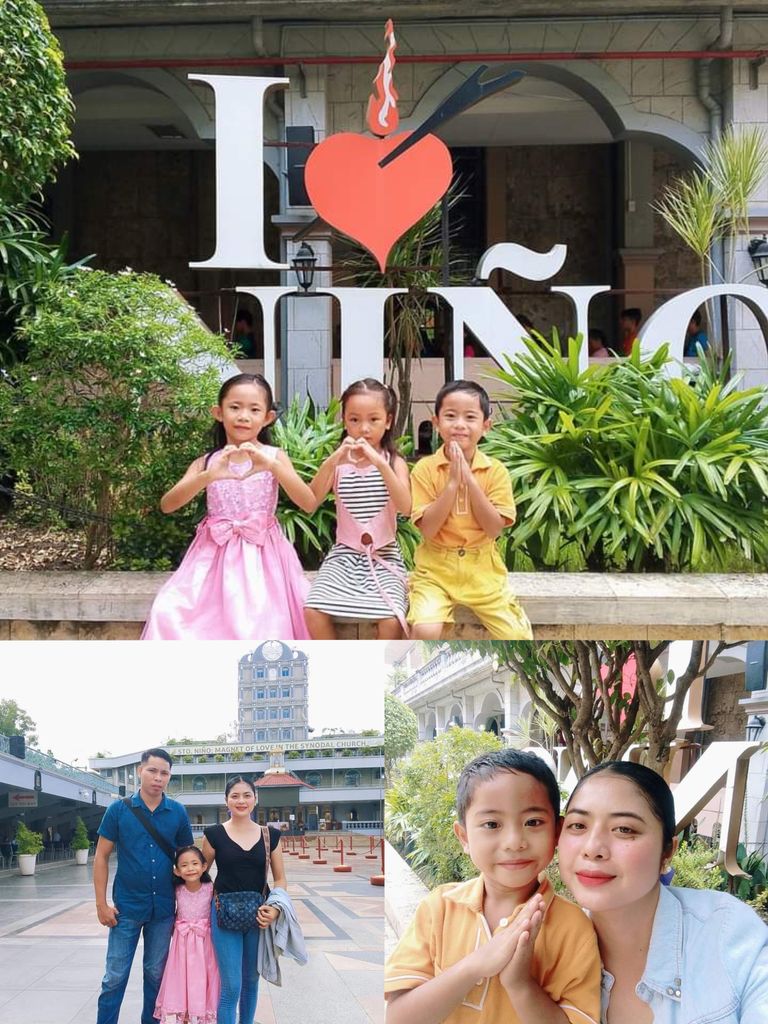Thanksgiving prayer together with my Family

Senior Sto. Niño,we come to you today with gratitude for all of the blessings you've given us, especially our friends and family members, and for the nourishment you provided to us.
Dear Lord, thank you for being here with us today. Guide our hearts toward gratitude today and every day.
I am so thankful for my family, my home, my Savior. Today, I ask for nothing and thank you for all things. In Jesus' name, Amen.
We're thankful for the big things like life, and breath, and salvation. But build in me a heart of thankfulness for all the little things as well. For the beautiful sunrise, for a place to live, for food on my table. Even when I struggle with those things, Lord, I know that you are good.
One of the truest ways to demonstrate your appreciation to God is to simply pray and tell Him. God loves to hear from you. He often wonders why you never call or write. Seriously though, prayer is the simplest and surest way to convey appreciation to God.
Please guide us always oh God. Please give me Your heart for others and the world around me. Each and every day, help me to see, through Your eyes, the truth of what is, what has been and what will one day come. In the name of Your son Jesus I pray, Amen.🙏😍🥰


As our Thanksgiving prayer we decided to visit Senior Santo Niño De Cebu💖
•The Señor Santo Niño de Cebú is a Catholic title of the Child Jesus associated with a religious image of the Christ Child widely venerated as miraculous by Filipino Catholics.It is the oldest Christian artifact in the Philippines,originally a gift from the Conquistador Ferdinand Magellan to Rajah Humabon (baptized as Carlos) and his wife and chief consort, Hara Humamay (baptized as Juana) on account of their Christian baptism in 1521. The image is the only canonically crowned image of Jesus Christ in the Philippines.
•The dark wood statue measures approximately 12 inches (30 cm) tall, and carved in the Flemish style. It depicts the Child Jesus, with a serene countenance, in the attitude and dress of a Spanish monarch. The statue bears imperial regalia, including a golden crown, globus cruciger, and various sceptres, wears fine vestments, and possesses jewelry mostly offered by devotees over several centuries.
•The image is replicated in various parts of the country with different titles and is one of the most beloved and recognizable Filipino cultural icons. The annual dancing feast of Sinulog is held on the third Sunday of January every year in its honor. Today, the original image is permanently encased behind bulletproof glass inside its chapel within the Basilica del Santo Niño.
*The image of the Santo Niño is the oldest surviving Catholic relic in the Philippines, along with the Magellan's Cross. A church to house Santo Niño was built on the spot where the image was found by Juan Camus. The church was originally made of bamboo and mangrove palm and is to be the oldest church in the Philippines. The church structure was destroyed several times over and was finally rebuilt with a permanent structure made from coralstone much later. The coralstone church structure is the Basilica that we see today.
*During World War II, the Japanese forces dropped bombs from their planes all over Cebu, including the Basilica. A bomb fell in the Basilica and greatly damaged the roof but, miraculously, did not explode. When the Augustinian friars inspected the immediate impact of the bomb in the church, they found that the image of the Santo Niño was flung out of its place in the High Altar and was dangling by its cape which had been snagged by an electric candle by the altar. After seeing the image displaced from the altar and seeing the rest of the church in great disrepair, and also out of the fear of future bombings in the vicinity of the Basilica, the Augustinian friars decided that it was best to seek refuge elsewhere. They sought refuge from the Redemptorist brothers in the Parish of Our Mother of Perpetual Help, commonly known locally as the "Redemptorist Church". The friars hid the image of the Santo Niño in a metal vault under the icon of Our Lady for seven months for safekeeping. After the war, the image was brought out of the vault to be displayed and venerated by the public. When the image was brought out of the vault, the friars had found that the dark paint that originally covered the image was peeling off. When they had peeled off all of the dark paint, they found that the image had a much fairer complexion. The image was venerated with its fair complexion for some time until the image was repainted with a brown complexion several years later.
*The name, "Santo Niño" was taken from the Spanish words, "Santo" which means "Holy" in its masculine form and "Niño" which means "Child" in its masculine form. Thus, it is translated as "Holy Child".
*Have A Wonderful Saturday To All Of Us!🤗😍
THANK YOU FOR ALWAYS SUPPORTING MY BLOGS!💖🥰
Congratulations, your post has been upvoted by @dsc-r2cornell, which is the curating account for @R2cornell's Discord Community.
Enhorabuena, su "post" ha sido "up-voted" por @dsc-r2cornell, que es la "cuenta curating" de la Comunidad de la Discordia de @R2cornell.